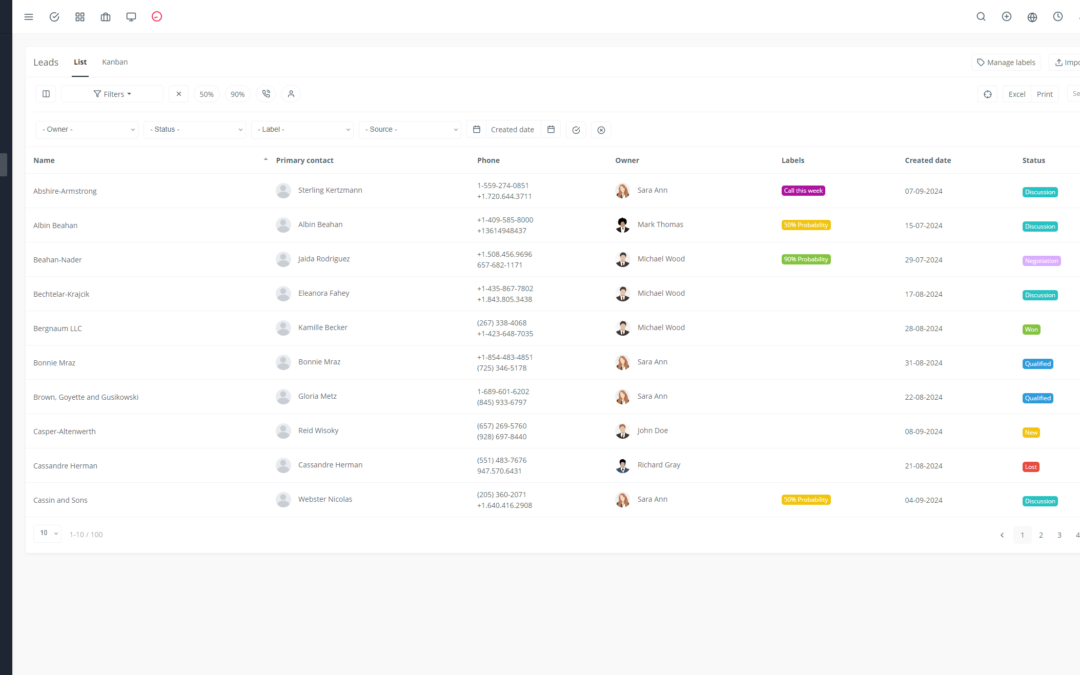Collaboration has become a crucial element for the success of modern businesses. 🤝 It drives innovation, improves communication, and maximizes productivity. But how does it translate in the real world of work?
Discover the key figures and trends in enterprise collaboration:
1. The Rise of Collaboration
97% of companies use collaboration tools. 🤯
75% of companies say collaboration is essential to their success. 🏆
2. Benefits of Collaboration
Increased Productivity: 📈 Collaborative teams are 20% to 30% more productive than teams working in silos.
Improved Communication: 💬 Collaboration helps reduce misunderstandings and facilitates information sharing.
Boosted Innovation and Creativity: 💡 Ideas emerge more easily when team members collaborate and exchange ideas.
Better Decision-Making: 🧠 Collaboration allows for the integration of different perspectives and leads to more informed decisions.
Enhanced Employee Engagement: 💪 Employees feel more invested in their work when they collaborate with their colleagues.
3. Types of Collaboration Platforms
Messaging Tools: ✉️ Slack, Microsoft Teams, Google Chat
Project Management Software: 🗓️ Trello, Asana, Jira
Video Conferencing Platforms: 💻 Zoom, Google Meet, Microsoft Teams
Document Sharing Software: 📝 Google Drive, Dropbox, OneDrive
Knowledge Management Platforms: 🧠 Confluence, Notion
4. Costs and ROI of Collaboration
Costs: 💸 Software, training, implementation time
ROI: 📈 Increased productivity, reduced costs, improved quality of products and services
5. Employee Satisfaction and Barriers to Collaboration
Employee Satisfaction Rate: 😁 Over 80% of employees are satisfied with the collaboration tools they use.
Obstacles: 🚧 Lack of communication, lack of training, technical issues, resistance to change.
6. Best Practices for Successful Collaboration
Define Clear Goals: 🎯 All team members should be aligned on the goals to be achieved.
Use the Right Tools: 🧰 Choose collaboration tools best suited to the team’s needs.
Encourage Open Communication: 🗣️ Foster the exchange of ideas and feedback.
Adapt to Different Working Styles: 🧠 Take into account each team member’s preferences.
7. Impact of Collaboration on Innovation
Increased Creativity: 💡 Collaboration promotes the generation of new and innovative ideas.
Accelerated Product Development: 🚀 Collaborative teams can develop and launch new products faster.
8. Emerging Trends in Collaboration
Remote Collaboration: 🌎 Remote work is booming, and collaboration tools are essential for maintaining team cohesion.
Artificial Intelligence: 🤖 AI can automate tasks and improve collaboration by analyzing data and providing relevant insights.
9. Real-World Examples of Collaboration Success
Google: 🚀 The use of Google Workspace has allowed Google to improve communication and collaboration among its teams worldwide.
Spotify: 🎧 Spotify uses collaboration tools to facilitate music production and audio content sharing.
10. Impact of Collaboration on Company Culture
Strengthening Team Cohesion: 🤝 Collaboration helps create a sense of belonging and solidarity among employees.
Promoting a Culture of Learning: 📚 Collaborative teams are encouraged to share their knowledge and learn from each other.
11. Benefits of Collaboration for International Teams
Reducing Language Barriers: 🌐 Collaboration tools offer translation features and allow for easy communication with people from different countries.
Better Understanding of Cultures: 🌎 Collaborating with people from diverse cultures enriches perspectives and improves mutual understanding.
12. Impact of Collaboration on Decision-Making and Problem-Solving
Faster and More Efficient Decision-Making Processes: ⏱️ Collaboration allows for quick access to information and different viewpoints.
Faster Problem Solving: 💡 Collaborative teams can identify and solve problems faster and more effectively.
13. How Collaboration Can Improve Company Performance
Improved Quality of Products and Services: 🥇 Collaboration allows for sharing best practices and ensuring quality consistency.
Increased Customer Satisfaction: 👍 Customers are more satisfied when they interact with teams that collaborate efficiently.
14. Key Performance Indicators (KPIs) for Measuring Collaboration
Collaboration Tool Usage Rate: 📈 Measure the use of collaboration tools to assess employee adoption.
Average Problem Resolution Time: ⏱️ Assess the speed at which teams collaborate to solve problems.
Customer Satisfaction Rate: 👍 Measure customer satisfaction to assess the impact of collaboration on product and service quality.
15. Importance of Data Security in Collaboration
Protecting Sensitive Data: 🔐 It’s crucial to choose collaboration tools that offer a high level of security to protect confidential data.
Compliance with Regulations: ⚖️ Businesses must ensure their collaboration tools comply with data protection regulations.
16. Impact of Collaboration on Work Flexibility
Remote Work and Increased Flexibility: 💻 Collaboration allows employees to work flexibly and be more productive, regardless of location.
Cost Reduction:* 💸 Remote collaboration can reduce costs related to offices and travel.
In conclusion, collaboration is a major asset for modern businesses. 🚀 By investing in the right tools and implementing the right practices, businesses can harness the power of collaboration to improve their performance, innovation, and employee satisfaction.

